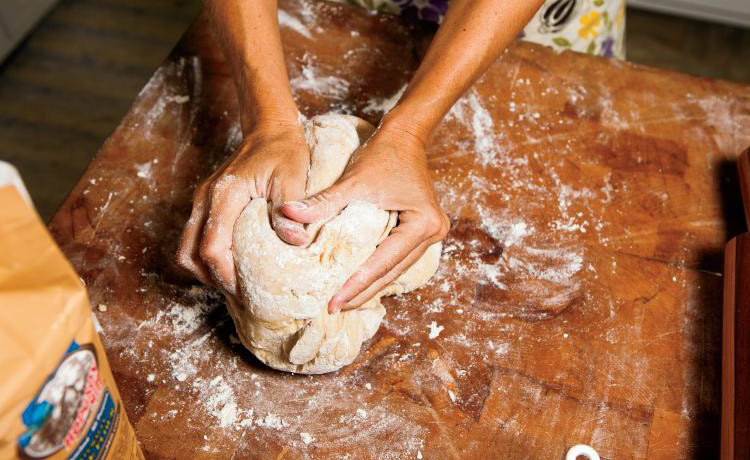Home > Lifestyle > Eats & Drinks > Homemade Food Gifts are a Treat to Give and Receive
Homemade Food Gifts are a Treat to Give and Receive
Not so many years ago, it was customary to bring a gift of food when paying a visit to a neighbor or sharing holiday joy. There’s something extra-special about a homemade food gift, especially during the busy holidays. And yeast breads give that added special touch. They need not be daunting with a bit of practice and a few tips for successful bread making. We hope this will inspire you to revive the art and custom of gifts from the kitchen. There’s a wonderful satisfaction knowing that you made it yourself.
From kneading the silky dough to watching it rise before your eyes, making yeast breads can be a satisfying experience for you and your friends. But did you ever wonder where that flour comes from?
Hodgson Mill, in Effingham, uses Illinois wheat in its stone-ground blends. The mill was started by Alva Hodgson, a pioneering Missouri millwright, whose name later became synonymous with Effingham’s water-driven grain mill. He started in the heart of the Missouri Ozarks in 1837. A second mill, built in 1861, burned down as Missouri passed through the chaos of the Civil War. By 1882, Hodgson made his way to Effingham and founded the stone-ground mill pictured in the company’s logo and still standing today. He and his brother, George, joined forces and eventually incorporated new machinery into the business.
Though Hodgson Mill expanded and modernized its milling facilities again in 1976 to keep pace with demand, the company still uses the same process Alva developed (and the image of the mill) to promote healthy whole-grain products and packaged mixes for home bakers.
“Everything we sell is whole grain – along with a lot of flax, a lot of gluten-free and everything healthy,” says Perry Propst, creative arts manager for the company.”
The company uses the stone-ground process, which keeps the grains from being crushed, preserving more of the healthy germ, bran and endosperm. The grains flow gently down into the top of the mill and, in one simple operation, are ground between two stones into whole-grain flours and cornmeals. Stonemilling also gives the flour a distinct texture that makes baked products more interesting, with greater eye and taste appeal.
And lately, they’ve seen an upswing in business.
“When the economy started turning bad, people started doing more baking, not going to restaurants. And we saw an increase in business,” says Propst.
One of the company’s biggest sellers is graham flour, also known as stone-ground whole wheat. Hodgson Mill recently redesigned the packaging to move the graham reference to the back, however.
“People were getting confused, thinking graham flour was just for graham crackers,” Propst says. “Stone grinding is specifically for graham flour. We pride ourselves on being stone-ground.”
We’ve developed a few recipes using stone-ground (or graham, if you promise not to just think of s’mores) flour to give as food gifts during the holidays. Mary’s Dark Bread is a family treasure from my sister-in-law, Mary, and the Sunburst Coffee Cake is one I’ve given as a gift many times, after learning the technique in a baking class. There’s also an easy recipe for Cinnamon-Cranberry Granola that makes a great breakfast or gift for a friend.
Charlyn Fargo is a registered dietitian based in Springfield, Illinois. She develops recipes and writes for Nutrition News and Illinois Partners.




